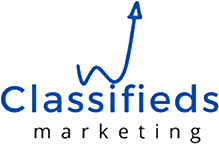The Rise of Personal Injury Attorney Advertising in Philadelphia
If you reside in the Philadelphia area, you may recognize the face of James Helm, even if you don’t know his name. His image, often featured on billboards and SEPTA buses, showcases a smiling Helm holding quirky props like an inflatable phone or a sack of cash, all against a vibrant yellow backdrop emblazoned with the words “CALL TOP DOG.” He epitomizes a growing trend where personal injury attorneys dominate outdoor advertising across the city.
Why So Many Billboards for Personal Injury Attorneys?
Curious about the proliferation of personal injury attorney advertisements? A reader recently posed this very question to Curious Philly, The Inquirer’s platform designed to answer local inquiries. The trend is indeed evident, as data supports the growing visibility of such billboards and commercials throughout the region.
The Data Behind the Trend
You’re not imagining things—billboards for personal injury attorneys are ubiquitous in Philadelphia. This year, WHYY’s BillyPenn examined a segment of I-95 from Philadelphia International Airport to the Tacony-Palmyra Bridge and discovered that 20% of the billboards were touting legal services. Philadelphia Magazine conducted a similar review and reported 63 attorney advertisements in a stretch now dubbed “Philadelphia’s own Personal Injury Alley.”
Moreover, SEPTA recorded nearly $400,000 in advertising revenue from law firms in fiscal year 2021, with projections indicating a jump to $1.6 million by 2025—a staggering 400% increase. This surge isn’t unique to Philadelphia; the American Tort Reform Association noted an estimated $2.5 billion spent by law firms on advertising across all mediums in 2024, with Philadelphia ranking among the top 10 media markets for legal advertising.
Notably, big players in the field include Morgan & Morgan, which spent an eye-popping $218 million in 2024, while TopDog ranked eighth with $27 million.
The Story Behind the Surge
The roots of this advertising surge are steeped in legal history. Until the 1970s, attorney advertising was prohibited due to ethical concerns surrounding professionalism and potential misleading claims. However, a landmark 1977 Supreme Court ruling lifted these restrictions, affirming that a ban on attorney advertising violated the First Amendment rights of lawyers.
While many attorneys remained hesitant to embrace such bold advertising, John Morgan transformed the landscape. After briefly selling Yellow Pages ads in Orlando, Morgan ventured into legal advertising in the late 1980s, fundamentally altering the way legal services are marketed. His success inspired a wave of similar advertising campaigns, prompting other lawyers to follow suit.
“Morgan & Morgan serves as a playbook for ambitious legal practitioners,” said Kyle Hebenstreit, CEO of the advertising firm Practice Made Perfect. “You can build a national practice if you approach it aggressively.”
Why Billboards and Bus Ads?
One challenge that personal injury attorneys face is the difficulty in identifying a specific target demographic for their services. In the realm of personal injury, anyone could potentially require legal representation following an accident. Billboards provide a cost-effective method to enhance visibility and remain top-of-mind for potential clients.
Furthermore, once a few attorneys jump on the billboard bandwagon, it tends to snowball, with others mimicking their strategies. However, not every firm views billboard advertising as the best fit. For instance, Kline & Specter, co-founded by Shanin Specter, opts for more nuanced forms of advertising, believing that a quick billboard message doesn’t adequately convey their unique selling points.
Are There Enough Cases to Justify the Advertising Boom?
Despite the overwhelming advertising, the number of personal injury lawsuits filed in the Philadelphia Court of Common Pleas has actually dropped, particularly in major categories. Motor vehicle accident claims, for example, fell from 10,218 in 2017 to 8,300 in 2024. Similarly, slip-and-fall cases also saw a decline, dropping from 4,049 to 2,938.
Interestingly, medical malpractice cases bucked the trend, experiencing a 50% increase due to legal reforms that broadened the scope for filing lawsuits in Philadelphia.
James Morgan, of Morgan & Morgan, frankly acknowledges the challenges of measuring advertising effectiveness. “Half of my advertising is working,” he admits. “I just don’t know which half.” It’s worth noting that not all firms promoting themselves on billboards actively engage in litigation. For instance, TopDog channels consumers to local counsel, and Helm himself is primarily the advertising attorney.
The Ethical Perspective
Some attorneys view these ads as essential to facilitating access to justice. Shanin Specter emphasizes that many people lack an attorney’s contact information and believe that advertising can help those in need find appropriate legal guidance. “Billboards may not be perfect,” he says, “but they could serve as a vital entry point into the legal world for many Philadelphians.”
Conversely, Curt Schroder, executive director of the Pennsylvania Coalition for Civil Justice Reform, criticizes these advertisements for fostering a more litigious society. He points out that many ads emphasize large settlements, arguably enticing individuals to pursue legal action in situations where it may not be warranted. “Not every injury or wrongful act necessitates a lawsuit,” he asserts.

